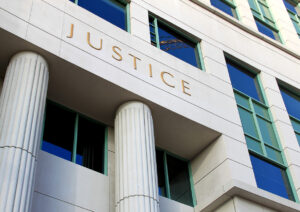
Negligence is the legal theory used in most personal injury cases. Negligence is a type of tort that holds people responsible for damages caused by their careless actions. Accident victims commonly use it to recover damages after an accident. For example, it is frequently used in car accident cases, wrongful death cases, and slip-and-fall accidents.
Here’s an overview of negligence and how you could use it to recover damages after an accident. For questions about your case, contact a St. Louis personal injury lawyer at Roach Law Car Accident Lawyers.
What Is Negligence

Negligence occurs when a person acts unreasonably and causes harm to someone else. To prove a case of negligence and recover damages, there are four elements you have to establish:
- Duty. The at-fault party, or the defendant, owed the victim, or plaintiff, a duty of care.
- Breach. The defendant breached that duty of care.
- Causation. The defendant’s breach caused the plaintiff’s injury.
- Injuries. The plaintiff suffered injuries or losses because of the breach.
Here’s a more in-depth look at each element of negligence.
Duty
The first element of negligence is duty. This means that victims must show that the defendant owed them a duty of care. This duty can arise from the relationship of the two parties – for example, a business and a customer.
It can also arise from the general duty that we all have to act reasonably and safely. For example, all drivers have a duty to comply with traffic laws and to drive safely.
Breach
Next, plaintiffs must show that the defendant breached the duty of care. This is often one of the trickiest elements to prove in a negligence case.
To show breach, a plaintiff must show that a defendant acted unreasonably or did not use the same level of care that a reasonable person would use in the same situation.
This can be difficult because the acceptable standard of care varies based on the circumstances. Sometimes, it’s easy to show – for example, if a driver was texting while driving. Other times, it can be more difficult to establish – for example, if a driver changes lanes carelessly.
An experienced personal injury lawyer can help analyze your case and provide a strategy for showing that the defendant breached their duty of care.
Causation
The third element of negligence is causation. Plaintiffs have to show that the defendant was the direct and proximate cause of their injuries. Another way to say direct cause is that, “but for” the defendant’s actions, the plaintiff would not have been injured.
Proximate cause means making sure there is a close enough connection between the defendant’s actions and the accident in question.
Injuries
Finally, a plaintiff must show that they suffered injuries because of the breach. The damages in a personal injury case usually include physical injuries and/or financial losses.
There are two categories of damages that plaintiffs can recover in a negligence case: economic damages and non-economic damages.
Economic damages are tangible losses that reimburse plaintiffs for expenses incurred after an accident. Examples of economic damages include:
- Medical bills and expenses
- Future medical expenses
- The cost of physical therapy, occupational therapy, and home health care
- Lost wages
- Lost earning capacity
- Property damage
In addition to economic damages, plaintiffs can also recover non-economic damages. Examples of non-economic damages include:
- Pain and suffering
- Emotional anguish and emotional distress
- Decreased quality of life
- Loss of consortium
- Scarring and disfigurement
A personal injury lawyer will help to calculate your damages and provide evidence of your losses. This is key for successfully bringing a negligence claim and ensuring you get the full compensation you deserve.
How a Personal Injury Lawyer Can Help With a Negligence Claim
Negligence claims can be difficult to prove. Plaintiffs must prove all four elements to successfully bring a claim and recover damages.
Personal injury lawyers understand these elements and know how to successfully prove them. After an accident, your personal injury lawyer will:
- Investigate your case to determine who was responsible for your accident;
- Gather evidence to prove who was responsible for the accident;
- Gather evidence to show that the defendant acted unreasonably;
- Calculate damages and gather evidence to support the damages claim;
- Represent you in court;
- Complete all administrative tasks, including complying with the statute of limitations.
Personal injury lawyers handle all of the logistics necessary for you to get compensation after an accident. This means accident victims can focus on getting their lives back to normal. Plus, it means victims get the compensation they deserve.
Contact a St. Louis Personal Injury Lawyer To Learn More
If you’ve been injured because of another party’s negligence, contact our experienced attorneys at Roach Law Car Accident Lawyers. Our experienced St. Louis personal injury lawyers will analyze your case and discuss your rights during a free consultation. We’ll give you a personalized strategy to get the compensation you deserve, call us at (636) 519-0085.
